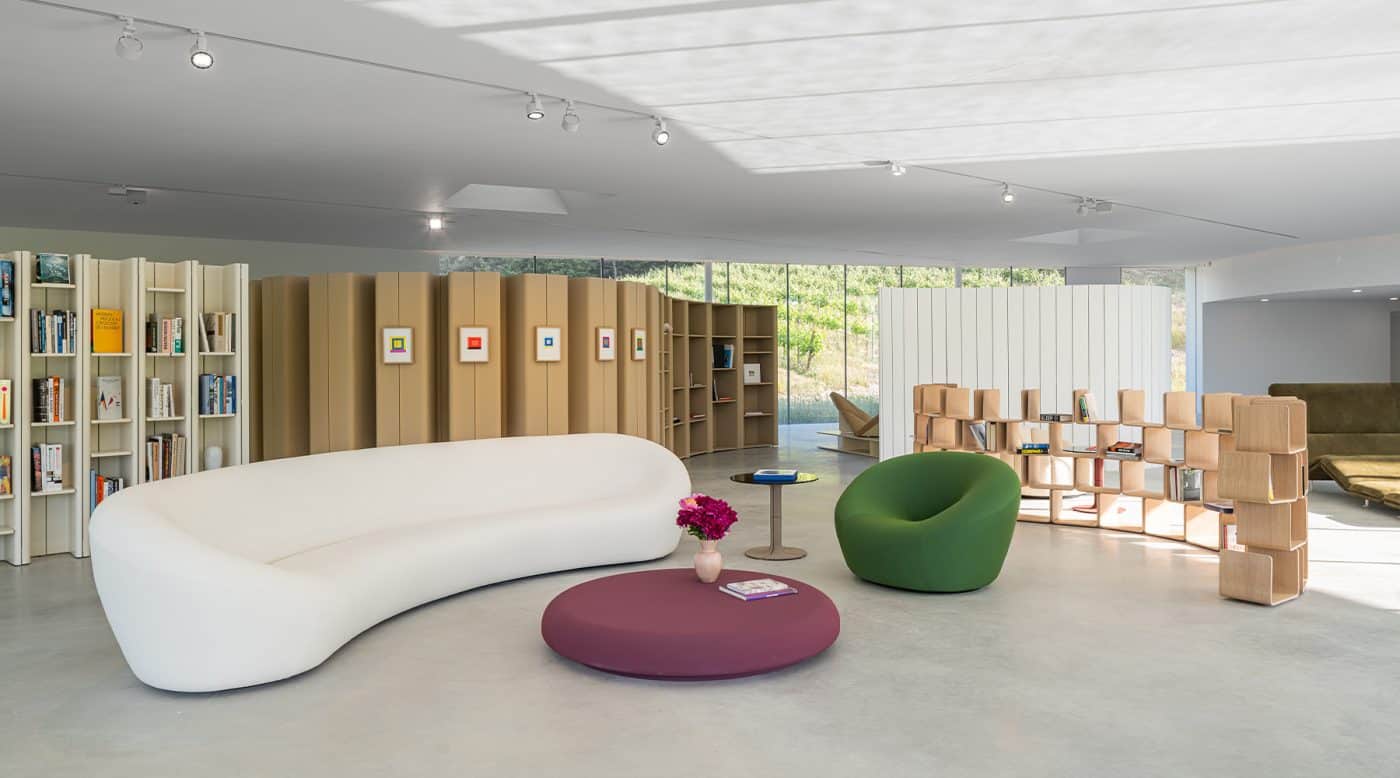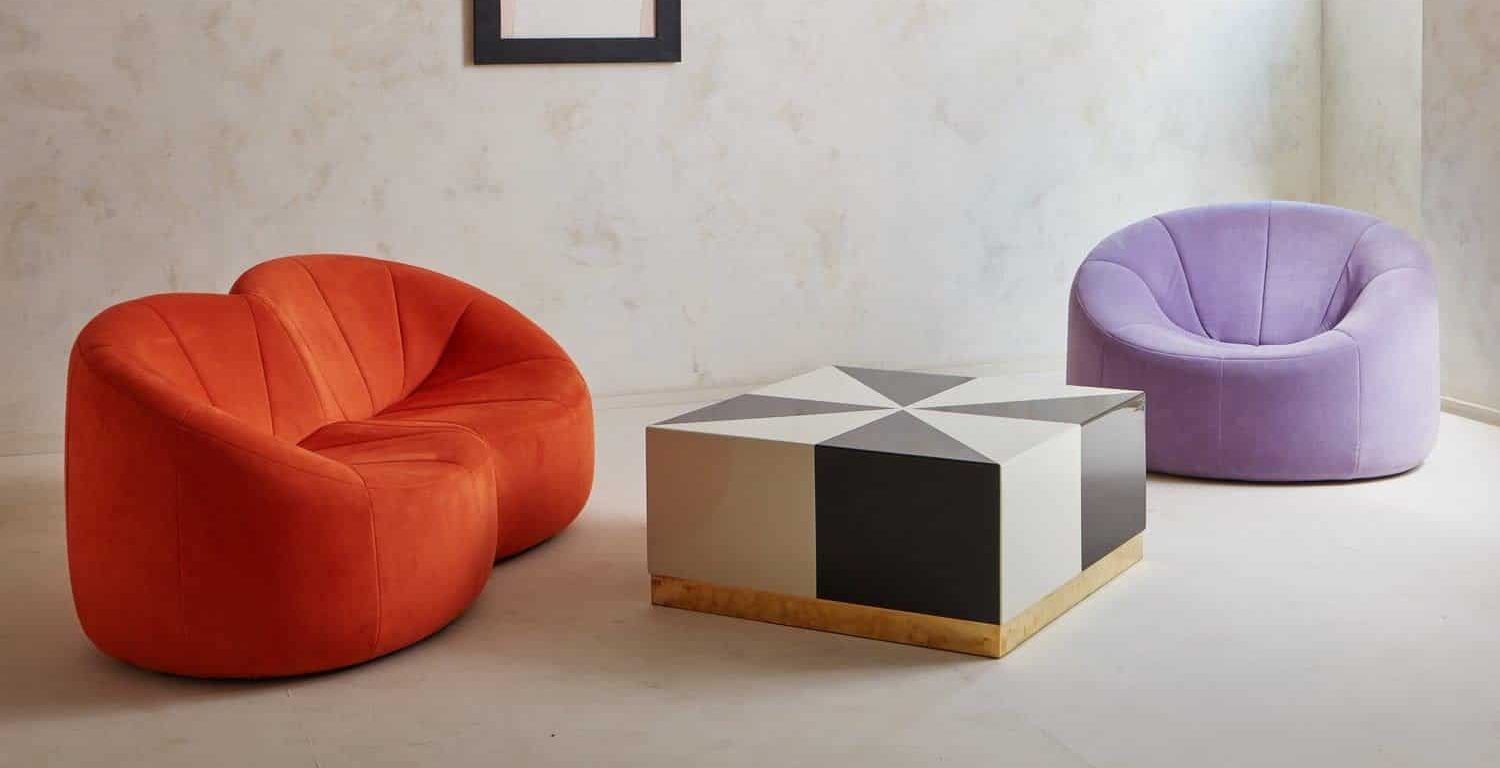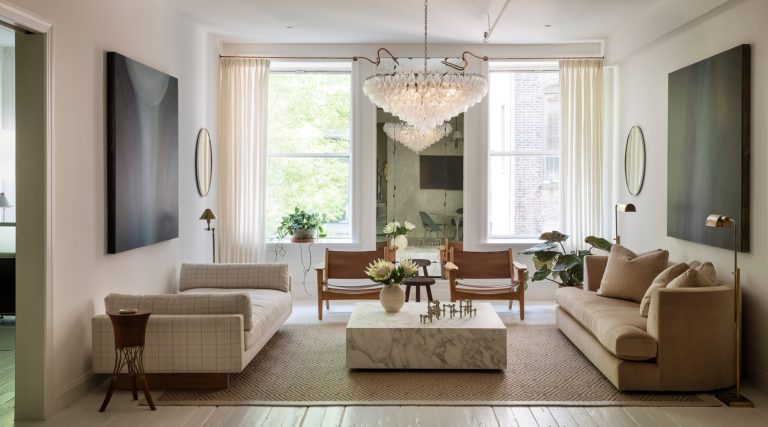July 23, 2023Toward the end of his life, in 2008, French designer Pierre Paulin was interviewed by architect Rem Koolhaas and contemporary-art curator Hans Ulrich Obrist and asked about his greatest regret. His answer was that he had not managed to commercialize a project known today as the Pierre Paulin Program. Developed between 1969 and 1972, the program was envisioned as a modular system of furniture components that could be combined at will, giving users the ability to design their own domestic interiors.
The American furniture company Herman Miller expressed interest in manufacturing the various elements of the program but eventually abandoned the idea because of financial constraints after the first oil crisis struck in the early 1970s.
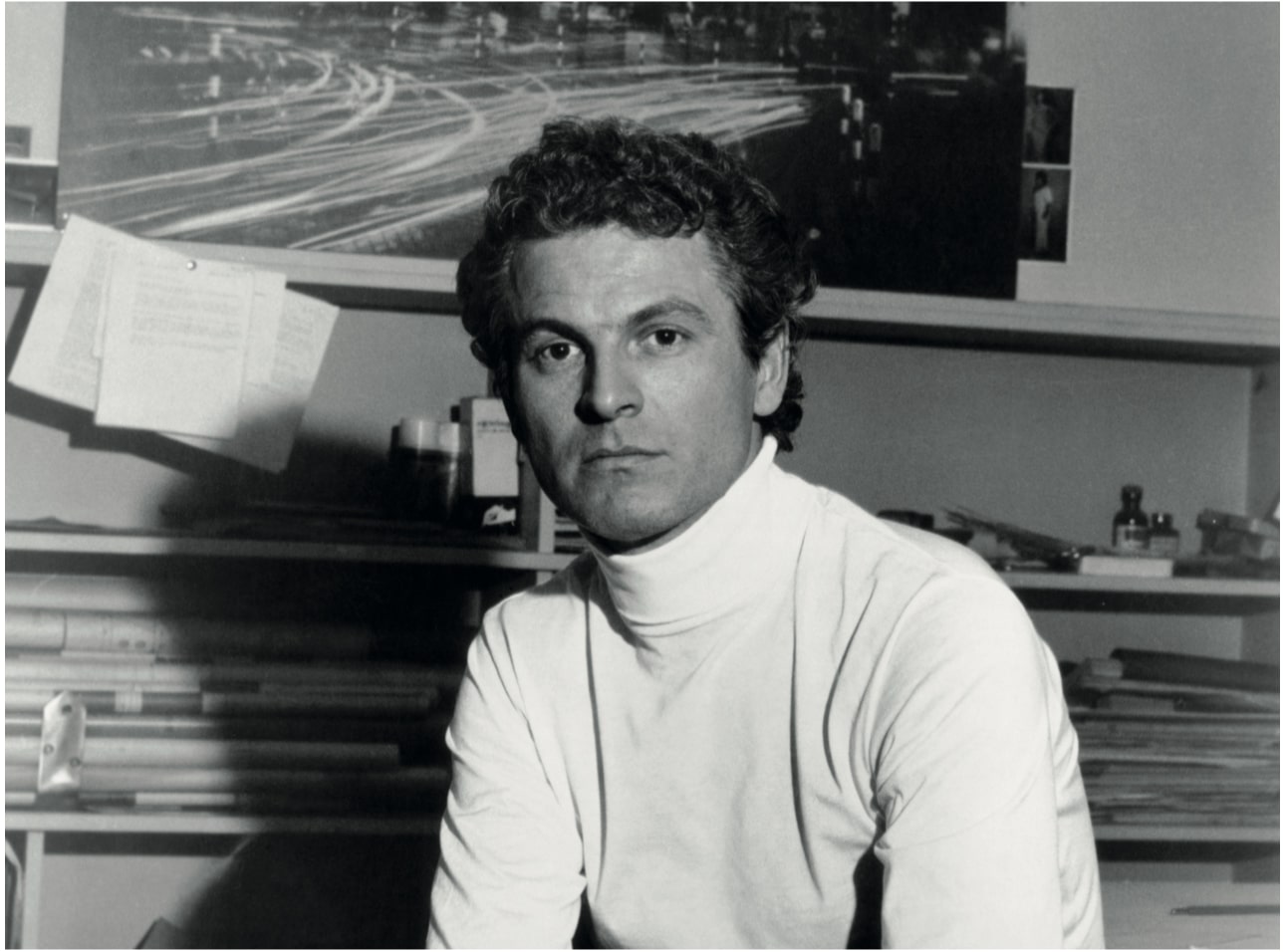
To demonstrate how the system could be deployed, Paulin created six miniature models that now are in the collection of the Pompidou Center and Louis Vuitton, in Paris. Five of these are based on a grid configuration, dominated by square tatami-like tiles that fit together to segue into pieces of low-slung furniture.
The sixth — called Model 5 — is quite different. The idea is that sinuously shaped modular shelves become space dividers, circumscribing zones with different functions into which can be deposited Paulin-designed furniture, such as the oversize Déclive chaise longue and the Tapis-Siège, an origami-like square lounger with four turned-up corners that serve as back rests, inspired by his time in Japan.
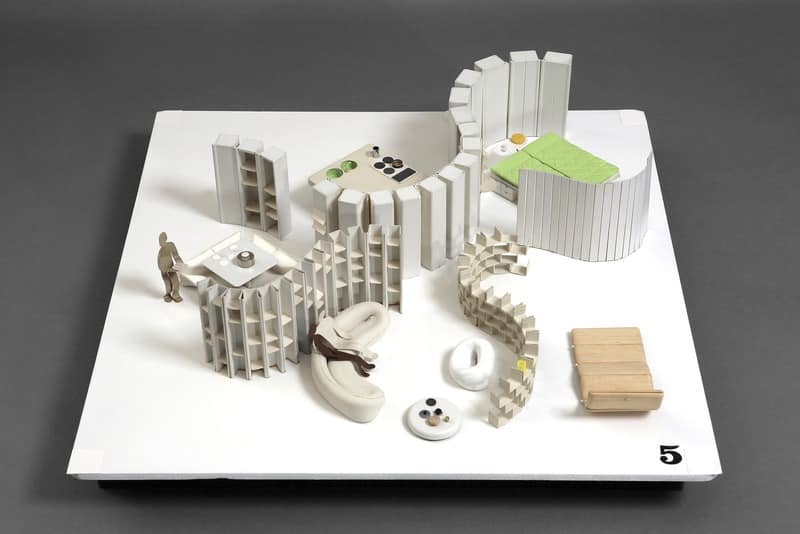
For the first time ever, a full-size version of Model 5 is on public view, through September 10, at the Château La Coste, a vineyard near Aix-en-Provence in the south of France.
The 500-acre estate was transformed into a prodigious center for art and architecture after Irish entrepreneur Patrick “Paddy” McKillen purchased it in 2004. Today, it’s peppered with sculptures by such artists as Louise Bourgeois, Richard Serra and Andy Goldsworthy, as well as buildings commissioned from architects Renzo Piano, Richard Rogers and Tadao Ando.
The exhibition is installed in the Château La Coste’s modernist Oscar Niemeyer Auditorium — the legendary Brazilian architect’s final work before his death in 2012 (constructed posthumously). Niemeyer’s curvaceous forms complement Paulin’s snake-like storage units, which are accompanied by the French designer’s immense Ensemble Dune modular seating arrangement in mustard yellow, fiberglass Miami dining table, biomorphic Mid C sofa and armchair, and kitchen island made from resin.
The setting is “like something out of a dream,” says the designer’s son, Benjamin Paulin. “I immediately fell in love with the building for its organic architecture and sense of serenity.”
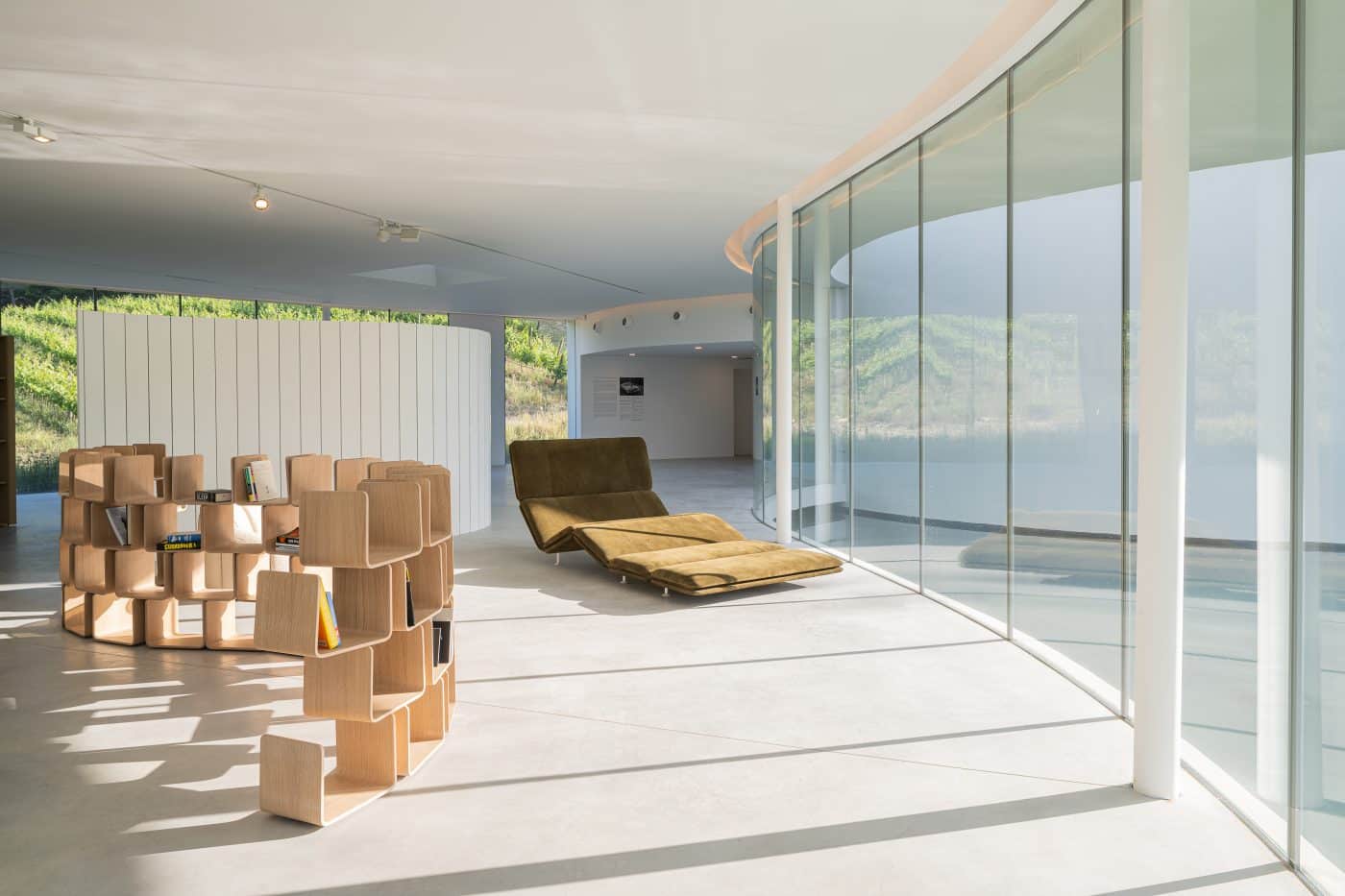
Sitting in the living room of his Paris home, Benjamin recounts that his father traveled to Brasilia, which Niemeyer designed, and was an admirer of the architect but that the two never met. “They could easily have done so, because at one point, they were both developing furniture designs with the same French company, Mobilier International,” he says.
Today, Benjamin heads up Paulin, Paulin, Paulin, which he describes as neither a foundation nor a furniture manufacturer but rather a “family venture” whose main goal is to promote and sustain the legacy of his father.
The current exhibition is the third the firm has organized around the Pierre Paulin Program. The first two — at the Rem Koolhaas–designed Villa Lemoine, near Bordeaux, in 2019 and at Japanese architect Yoshio Taniguchi’s House at Yukigaya, in Tokyo, in 2022 — focused on the grid-like models, which seem both more utopian and more dated than Model 5. The Bordeaux installation in particular would not have looked out of place in a Jacques Tati movie.
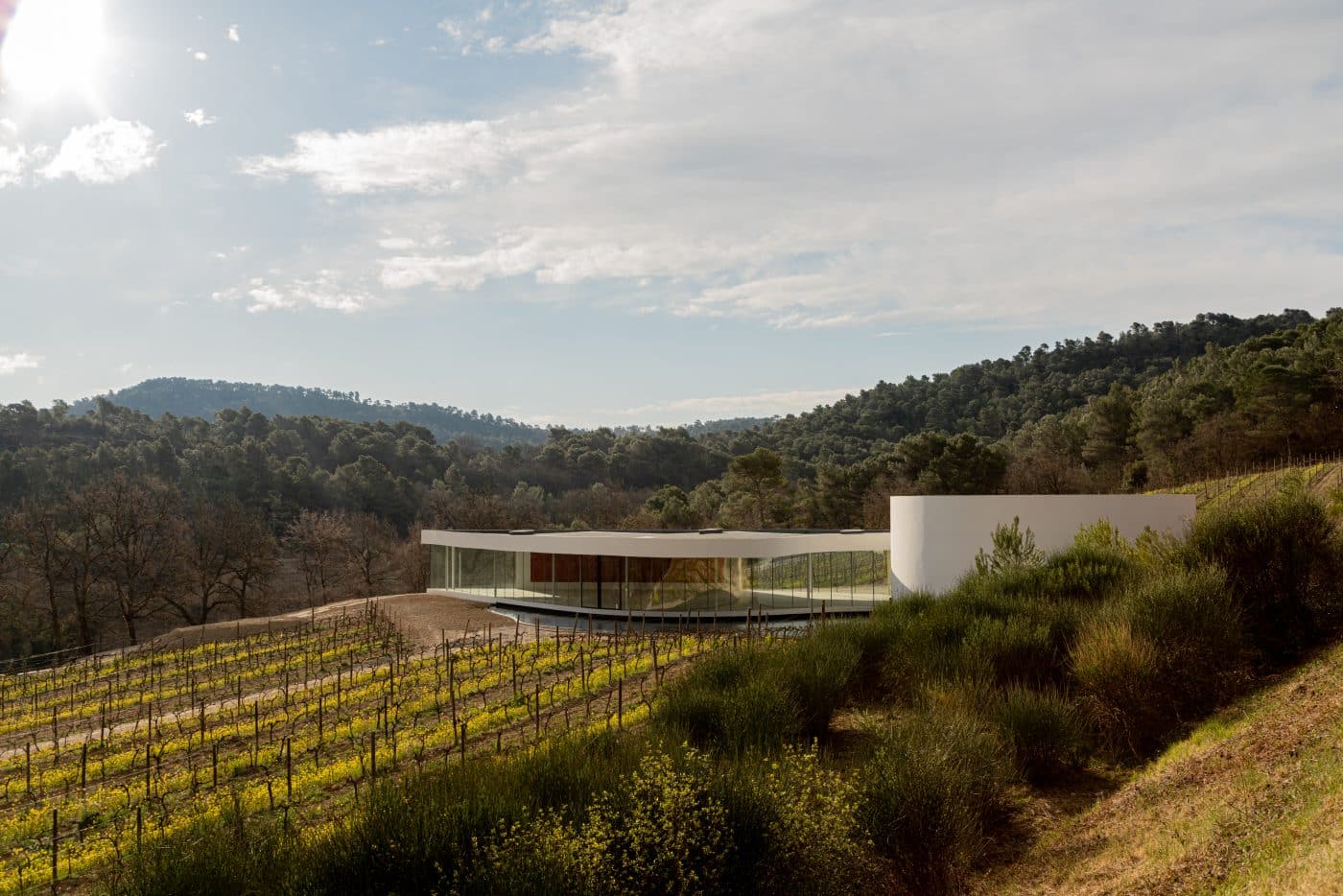
Nowadays, Paulin is best known for a series of distinctive sculptural chairs that mold to the human form. With names like the Mushroom, the Tongue, the Orange Slice and the Ribbon, they were largely manufactured by Artifort in the mid-to-late 1960s.
The other high point of his career was his decoration in the early 1970s of a succession of four rooms in the Élysée Palace, the official residence of the French president. The commission was initiated by President Georges Pompidou, who insisted that Paulin’s intervention be both silent and easily removable.
The designer responded by constructing rooms within rooms, using prefabricated wall and ceiling panels that were assembled on site using wrenches. In the dining room, the panels were made of polyester by a boat builder. In the other spaces, they consisted of an elastic fabric stretched over foam and a steel frame. The furniture was fittingly futuristic, with the ceiling of the dining room covered in an immense light fixture made up of thousands of Lucite stems.
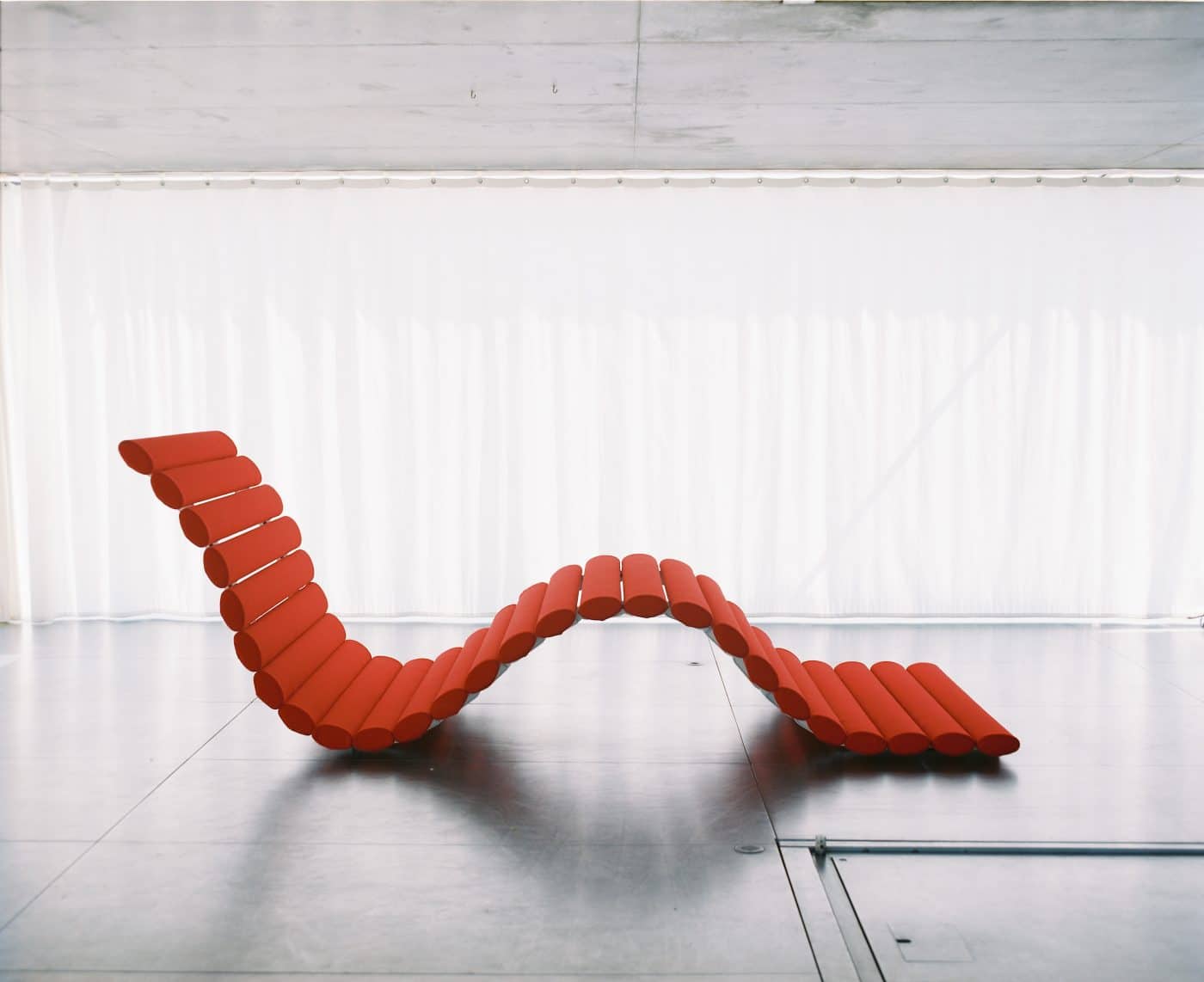
It was to talk about this intervention in the presidential palace that I interviewed Paulin back in 2008, and I still recall a sense of trepidation before the meeting, having read about his reputation for being difficult.
“When he was ill at ease with people, he could be quite disagreeable,” admits Benjamin Paulin, “but out of timidity rather than nastiness.” As it was, I found him charming and playfully provocative. He told me the rooms he inherited at the Elysée Palace were “disgustingly filthy,” that he’d had difficulty getting paid for the project and that Pomipdou’s successor, Valéry Giscard d’Estaing, was “not in the least cultivated.”
Paulin was born in Paris in 1927 to a Swiss-German mother and a French father, a dentist whose patients included Gaston Gallimard, possibly France’s most illustrious book publisher. Paulin attributed his interest in design to an uncle who registered a patent for a convertible car and worked for Peugeot and Bentley.
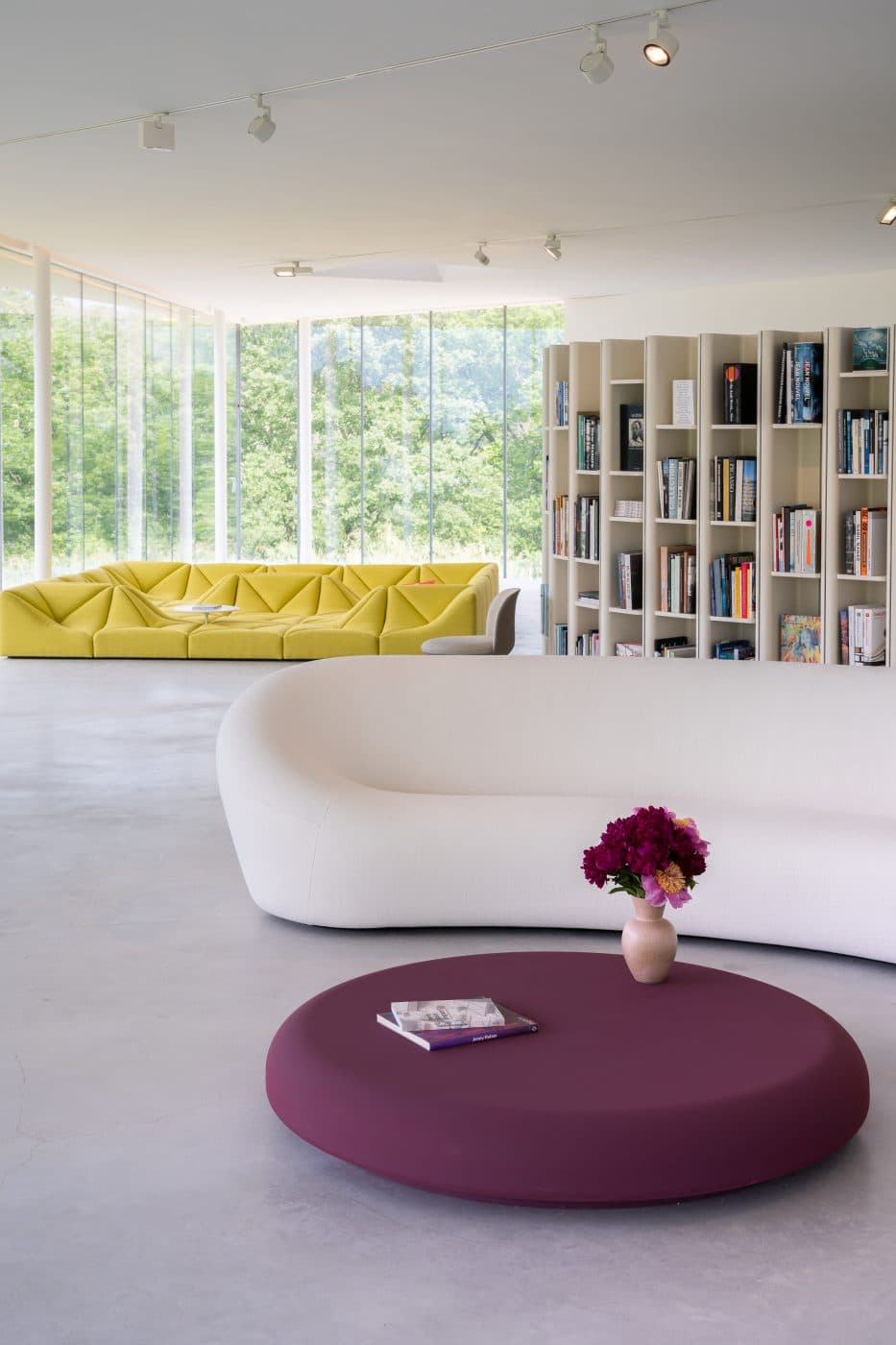
Paulin initially considered a career as a sculptor but abandoned that path after cutting a nerve in his arm at the age of 19, an injury that left his hand partially paralyzed. Instead, he enrolled to study design at the École Camondo, in Paris, and very quickly developed an appreciation for the simplicity and modernity of Scandinavian and American furniture. He acquired a particular passion for the work of Charles and Ray Eames. “Everything they produced was . . . so well designed, so new,” he declared.
The same could be said of his own work. In her extensive Paulin monograph, the French author Nadine Descendre describes him as “a designer who was far ahead of his time. He found a style and a way of thinking about design which supplanted everything that had gone before.”
His primary innovation lay in his use of elastisized fabric, which he stretched over the structures of his pieces, thus creating wonderfully pure forms. Prime examples in the Château La Coste exhibition include the bulbous Mid C chair and the Alpha club chair.
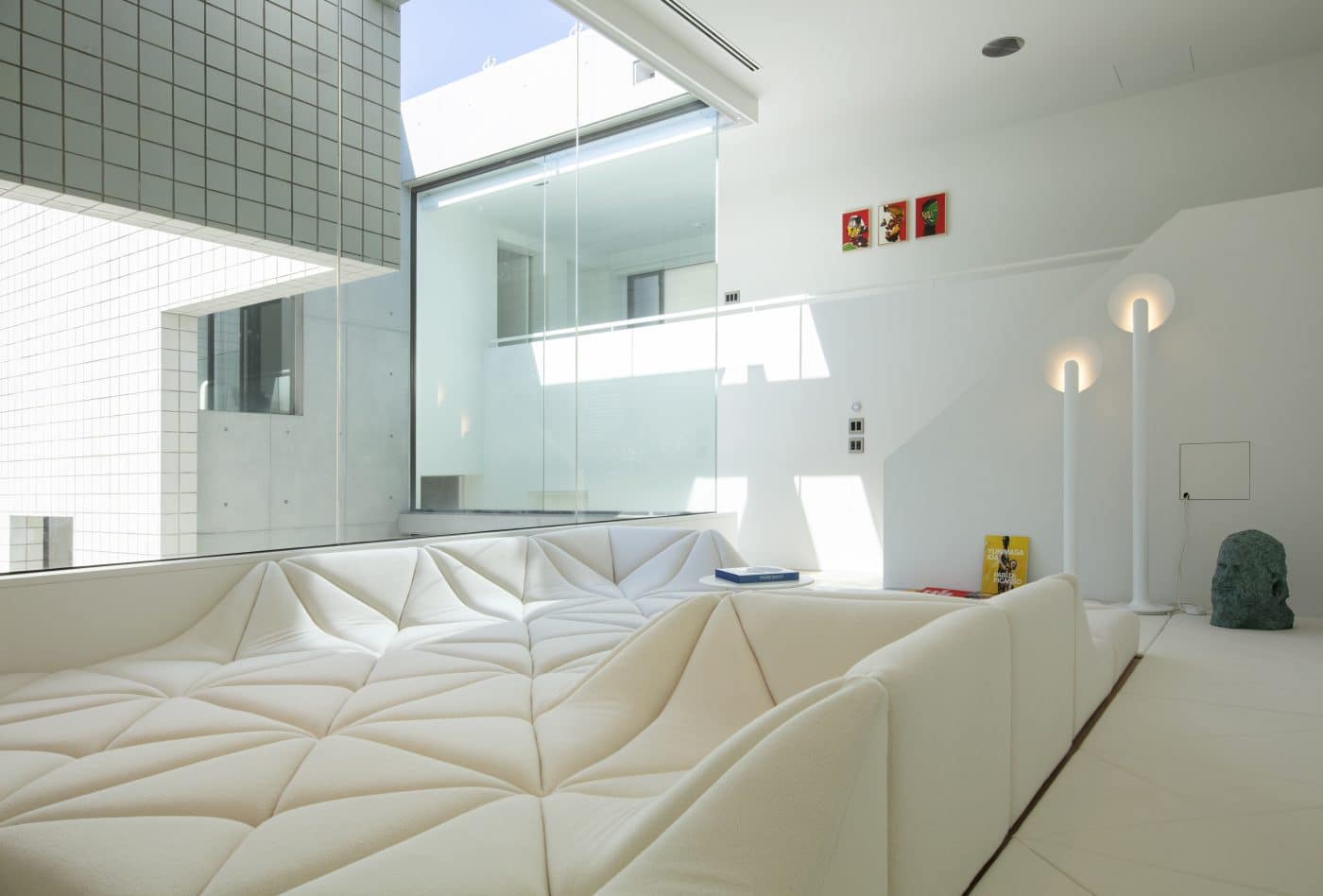
The first 25 years of his career were filled with one success after another, but the Pompidou commission and Pierre Paulin Program marked a tipping point.
After Herman Miller scuppered the latter, Paulin was “plunged into despair” and “overwhelmed with bitterness,” Descendre writes. In 1975, he turned his hand to industrial design, largely out of financial necessity, going on to create everything from irons, razors and toilet accessories to the concourse at Paris’s Austerlitz station.
He complained that he never received the recognition he deserved in his native France. But he did receive a commission in the early 1980s to redesign President Mitterrand’s office at the Élysée Palace, and toward the end of his life, his star began to shine once more.
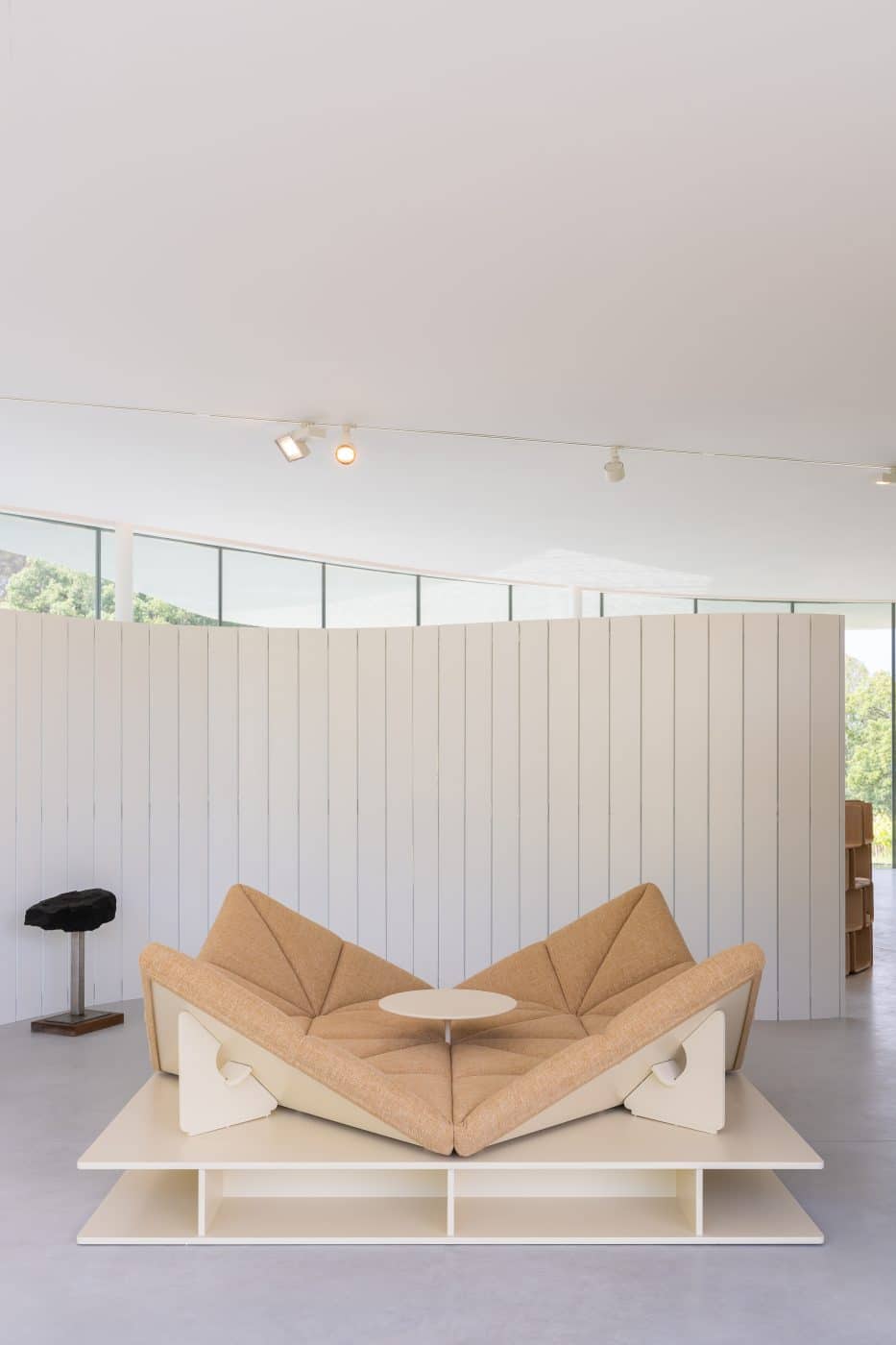
In 2000, Paulin’s Mushroom chair and Osaka banquette were reproduced by Habitat during Tom Dixon’s tenure as the firm’s artistic director. In 2007, exhibitions devoted to his work were held at the Galerie Azzedine Alaïa, in Paris, and the Villa Noailles, in the south of France. The following year, he was named Designer of the Year at the Maison&Objet trade show in Paris.
When Paulin, Paulin, Paulin began producing the furniture designs from his Program, among the first customers for the pieces were Alaïa and another fashion designer, Nicolas Ghesquière. Today, they continue to be manufactured at a small atelier in the rural Cévennes region of France, where Paulin spent the last years of his life.
“Our ambition is not to produce as many as possible. We’re more interested in selling to the right people,” Benjamin says. “We function rather like a gallery. More than anything, it’s a way of keeping my father’s dream alive.”
